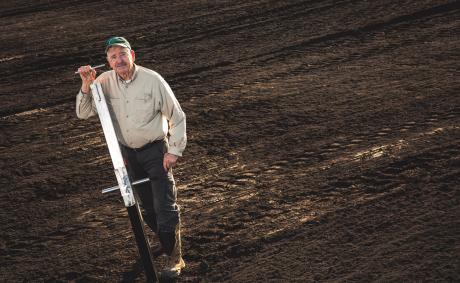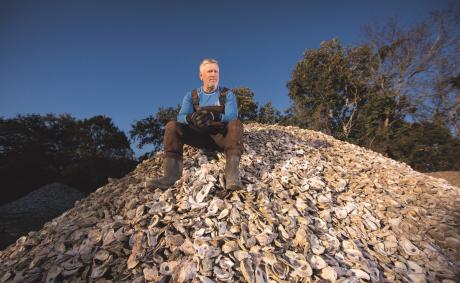THE FIRE CHASERS deployed on 24 hours’ notice.
The moment a severe and complex fire developed, the N.C. State University wildfire research team convoyed across the American West, jamming to a playlist of songs with the word “fire” in the title. Once at the fire, they embedded with Type 1 Incident Management Teams – the most elite wildland firefighters in the nation.
“If they were going out on the fire, we would go right with them,” says Toddi Steelman Ph.D.’96. “[To do that] you have to learn how to use all the tools. You have to learn about fire weather and behavior. You have to learn about how to get in and out of a fire shelter in 30 seconds’ time.”
Steelman co-led Fire Chasers before becoming the Stanback Dean of Duke’s Nicholas School of the Environment, and in that role she is one of the architects of the university’s Climate Commitment. Before joining Duke in 2018, wildland fire research was Steelman’s focus. She was at home behind the fire line, watching and listening and analyzing how communities and institutions responded to bigger, wilder fires.
Steelman remains a Fire Chaser, a prominent wildland fire researcher and an in-demand speaker at wildfire conferences. Fire is at the heart of everything this dean does, even as her role and influence broaden.
“It’s very intersectional for me,” says Steelman. “You can’t understand my interest in the Climate Commitment unless you understand my research.”
“Part of the fieldwork I engaged in for nearly 20 years involved being embedded on numerous large wildfires with some of the most elite firefighting commanders in the U.S.”
-STEELMAN
In short, climate change leads to warmer, drier conditions and longer fire seasons, according to the National Oceanic and Atmospheric Administration. Globally, this means larger, more complex fires. In the U.S., this is most felt in western states, where wildfires have worsened considerably since the ’90s.
Steelman studies the human networks that form to fight such modern megafires: elite teams, sure, but also locals on four-wheelers evacuating people from remote canyons, volunteer firefighters pitching in and small-town governments responding to imminent threats.
Today’s largest wildfires often cover multiple overlapping jurisdictions. Steelman’s work with longtime collaborator Branda Nowell, an NCSU organizational-community psychologist and the co-founder and current leader of Fire Chasers, has led some incident managers to realize they are not just managing fire, but governments, highway evacuation routes, and shelters.
It’s easy to imagine Steelman holding her own with firefighters. She talks with the straightforward, no-nonsense clip of a first responder, of someone intimately familiar with disaster.
“There is not an ounce of posturing with Toddi,” Nowell says.
Steelman still publishes frequent wildland fire research, often in collaboration with Nowell. Some of Steelman’s papers since 2018 argue for an evolution away from traditional top-down emergency management and toward structures that give voice to the complex web of authorities and affected parties.
“I don’t think she’s done,” says Mikel Robinson, executive director of the International Association of Wildland Fire. Steelman was IAWF president from 2020 to 2021 – the first woman in that role – and Robinson has witnessed Steelman’s confidence communicating her expertise at the U.S. Capitol, to frontline emergency workers or in a conference setting.
“Part of the fieldwork I engaged in for nearly 20 years involved being embedded on numerous large wildfires with some of the most elite firefighting commanders in the U.S.,” Steelman says. “This gave me a front-row seat in a master class of leadership and management.”
Indeed, the core of Steelman’s scholarship, she posits, is understanding how to manage diverse interests to serve the common good. There may be no better training for a dean than the puzzles of governing emergency response in a complex environment, she adds.
“Many of those lessons learned have been translated directly into my own leadership style at Duke,” Steelman says. “In all cases, I have learned how to put out a lot of fires!”





